Fall Turkey Hunting from a Tree Stand?
Take Fall Turkey Hunting to New Heights
November is flying by at a record pace. Before you know it and if we’re lucky, we’ll be gathered around a table giving thanks with family or friends. Now imagine going out yet this fall and putting a big tom turkey on the ground, just in time for some Thanksgiving table fare. How proud would you be serving your family and friends some fresh, deep-fried wild turkey instead of the store-bought version? If that seems like it would be a fun twist for your tradition, you should consider going fall turkey hunting this year.
While spring turkey hunting typically gets most of the hype and attention, there’s a lot of exciting action to be had in the fall too. Some states have more relaxed regulations for fall turkey hunting, which can increase your chance at harvesting a bird. In Minnesota, for example, the fall turkey hunting seasons are liberal and you can possess an either-sex fall tag. That means you could legally kill any turkey that strolls within range. That alone drastically changes the game if you’re hoping to guarantee a Thanksgiving bird. To make things even easier, this article is going to discuss how to successfully hunt turkeys from a tree stand. If you’ve already got turkeys in your hunting areas and have some deer stands up, you’re all set!
How Are Fall Turkeys Different?
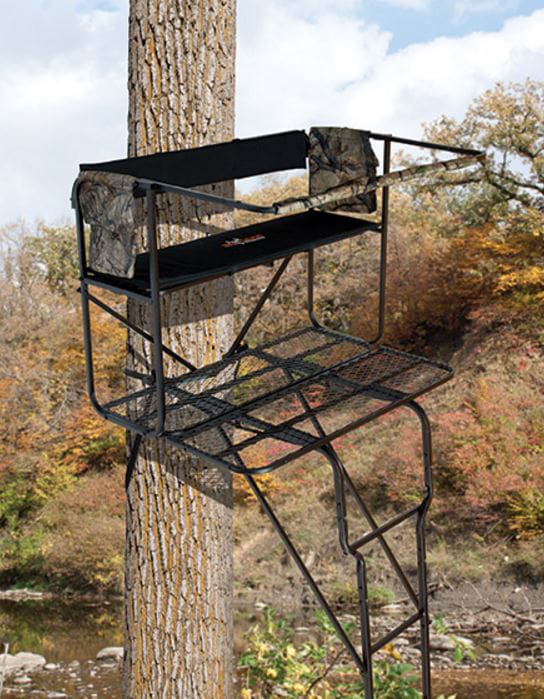 Before you hunt, it’s important to know the different turkey habits in the fall; they are very different critters than they are in the spring. Springtime is all about mating season and courtship displays, while fall is all about food and survival. Toms will spend a great deal of energy chasing hens in the spring, but they pretty much stick to bachelor groups in the autumn looking for food sources. Because of these tendencies, you would typically use hen decoys and hen calls to convince a tom to come investigate in the spring, but you need to use tom or jake decoys and similar male calls to get a gobbler to come by in the fall. As you can see, there are a lot of big differences between hunting a spring turkey versus a fall turkey.
Before you hunt, it’s important to know the different turkey habits in the fall; they are very different critters than they are in the spring. Springtime is all about mating season and courtship displays, while fall is all about food and survival. Toms will spend a great deal of energy chasing hens in the spring, but they pretty much stick to bachelor groups in the autumn looking for food sources. Because of these tendencies, you would typically use hen decoys and hen calls to convince a tom to come investigate in the spring, but you need to use tom or jake decoys and similar male calls to get a gobbler to come by in the fall. As you can see, there are a lot of big differences between hunting a spring turkey versus a fall turkey.
Why Tree Stands for Fall Turkey Hunting?
Most people associate hunting turkeys with ground blinds, and that is definitely the most common approach. In the fall, many people also choose a run and scatter tactic, which can use the bird’s confusion to bring them right back in for a shot. But in most cases and places, people already have tree stands in place for deer hunting throughout the fall, which means turkeys are used to seeing them. Why not use them? Generally, they are also already very concealed and located on food plots or good travel routes, which are good spots for turkeys as we’ll discuss below. Depending on where you hunt, many turkeys are not used to aerial predator attacks. Since most hunters don’t approach them that way either, you can sometimes get away with a little more movement, especially if you’re wearing a good camouflaged set of turkey hunting clothing,. Finally, it requires the least amount of work to do, assuming you already have some tree stands up. If you don’t have some existing ladder stands or pre-hung lock on stands, your best bet is to choose mobile stands (i.e., lock on stands). That way, you can adjust your location easily depending on where the turkeys are or are not. You may want to hang a universal shooting rail with the fixed position tree stand, so that you can drape a camo blind kit around it for additional concealment; just don’t hang it so high that you can’t see the decoy below you to make a shot.
Speaking of the best locations to find fall turkeys, food sources and travel corridors are the best. Clover and hay fields offer greens for turkeys to eat with room to run, while brassica fields offer food and cover. Wooded cover between roost trees and feeding areas are also good ambush sites, particularly if there are any hawthorn, crabapple, or similar fruit trees. Many fall turkey crops have been full of small apples or fruits after shooting them. If you have deer stands in any of these areas, consider hunting them with a new goal: a fine turkey dinner.
Fall Turkey Tactics
Now that you see why tree stands can work so well for fall turkey hunting, let’s look at some specific turkey hunting tips you can use. First, you may want to monitor your hunting property for a few days with trail cameras, just to survey the area and see what’s happening. You can get a lot of information out of a trail camera, including how many turkeys are on your property, the number of toms/hens/jakes/jennies, the time of day the turkeys are using an area, and which direction they are coming from/going to. Review the pictures to form a plan about where and when to hunt.
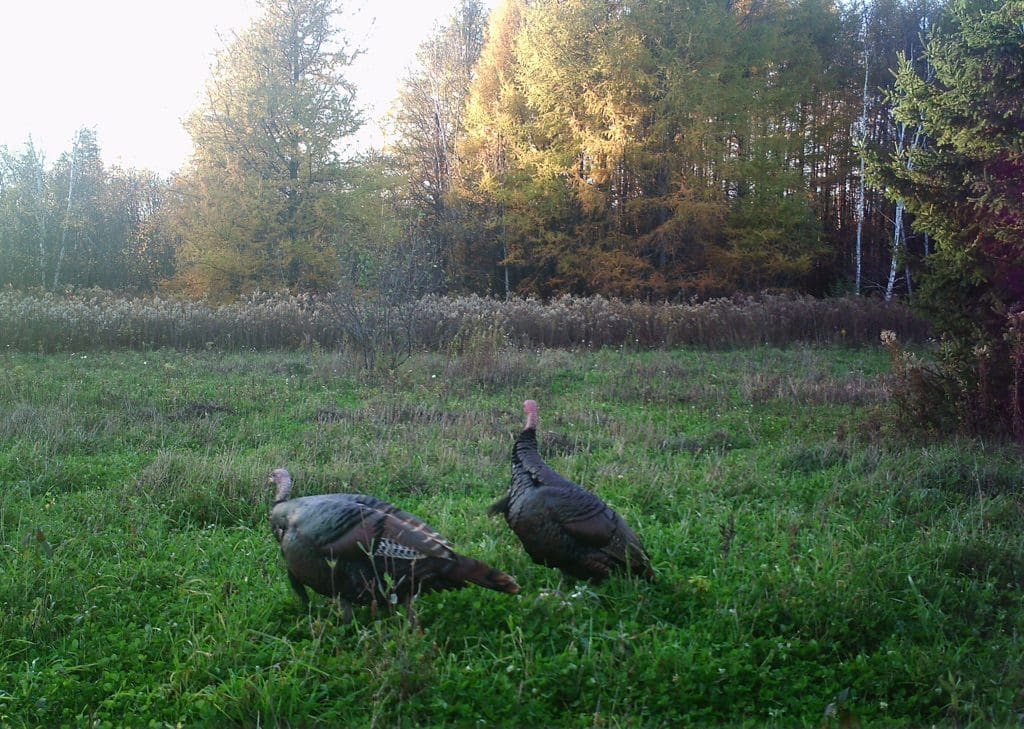
If you’d like a large tom for the table, set up a male turkey decoy (probably a jake) in the food plot, field, or travel corridor. Whether other toms feel threatened or just want to come check out the new bird in town, decoys are very useful for fall turkey hunting to provide a distraction point and draw them in quickly. The more realistic the decoys, the better. Set the decoy up about 20 yards from your tree stand, so that you can still take an ethical shot if a gobbler hangs up beyond it. Again, make sure you can see the decoy and position your shotgun from your tree stand; you don’t want to have to stand up and move around to get ready.
Now as far as how to call fall turkeys, we already mentioned it briefly above. Males respond to male calls and females to female/poult calls. One of the best fall turkey calling tips if you’re looking for a gobbler is to give a few tom yelps every twenty minutes or so, which are lower and raspier than a hen. It should follow a slow three-note cadence, followed by a pause and another three-note yelp. After calling, listen intently as toms may call back and give you a warning as to where they may approach from. If the decoy is on a main feeding field, is visible from a distance, and turkeys are in the area, they will likely make their way to the field anyway. As soon as they hear audible proof that a jake is standing there, they will often come running in on a string.
Time for a Thanksgiving Bird
This year, consider going fall turkey hunting to have a Thanksgiving you won’t forget. And if you’re looking to try an even more unusual tactic, try sitting in the deer stand to do it. It makes for a great story around the table!

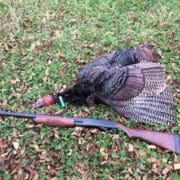
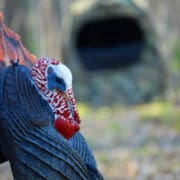
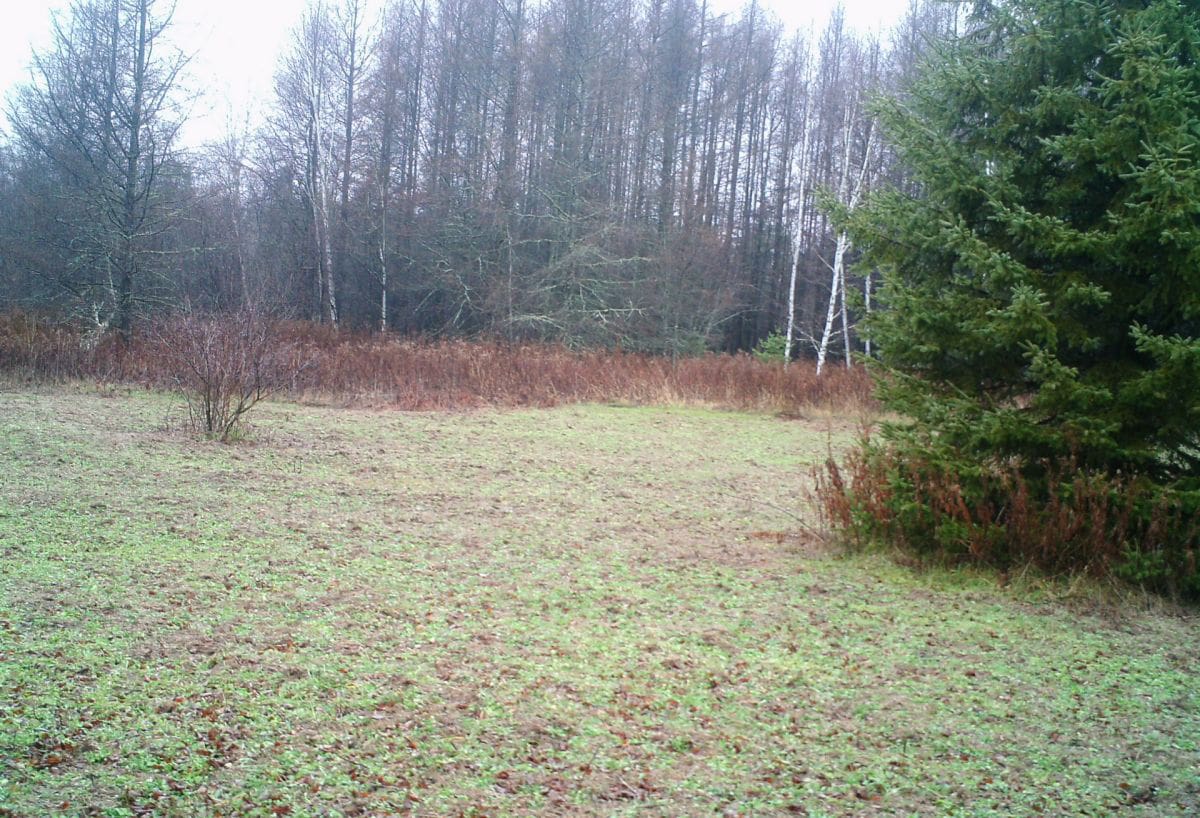
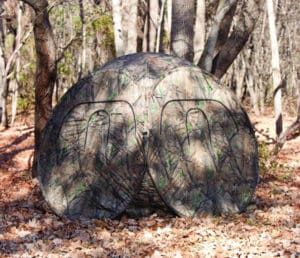
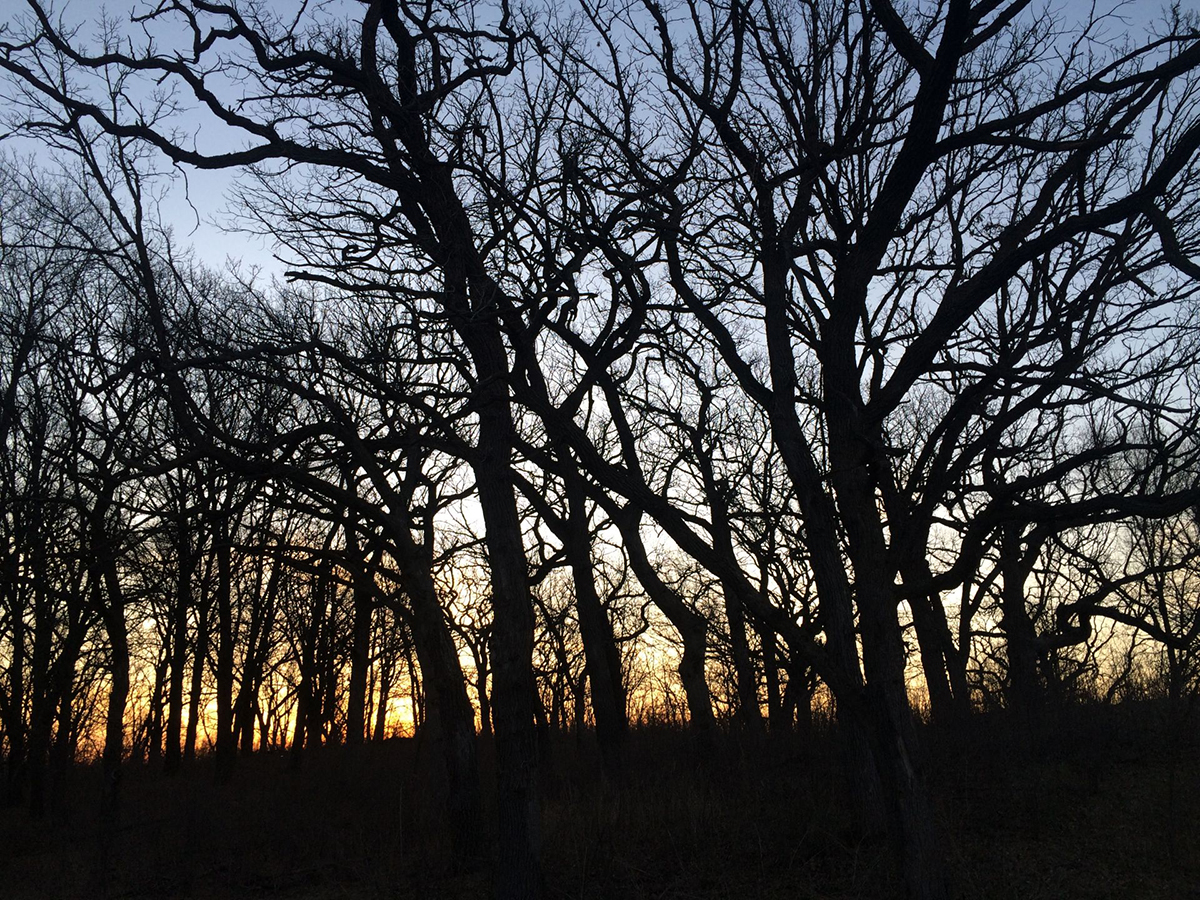 If the morning hunts don’t work out in your favor, it’s not too late. Afternoon turkey hunting can also produce some exciting action, depending on the location you choose to hunt. First, realize that turkeys will get more cautious as they return to their roost trees, as they don’t want to attract the attention of a predator right before bedtime. As a result, dial down your calling efforts as the afternoon sun starts to dip lower in the sky. To still catch some good turkey action, set your ground blind up on a travel route between the feeding and roosting sites, but nearer to the food source where the gobblers will still eat and strut a bit before retiring for the day. One of the best afternoon turkey hunting tips is to not set up too close to the roost trees, because you’ll probably not hear them approach and you’ll disturb them when you leave for the night.
If the morning hunts don’t work out in your favor, it’s not too late. Afternoon turkey hunting can also produce some exciting action, depending on the location you choose to hunt. First, realize that turkeys will get more cautious as they return to their roost trees, as they don’t want to attract the attention of a predator right before bedtime. As a result, dial down your calling efforts as the afternoon sun starts to dip lower in the sky. To still catch some good turkey action, set your ground blind up on a travel route between the feeding and roosting sites, but nearer to the food source where the gobblers will still eat and strut a bit before retiring for the day. One of the best afternoon turkey hunting tips is to not set up too close to the roost trees, because you’ll probably not hear them approach and you’ll disturb them when you leave for the night.